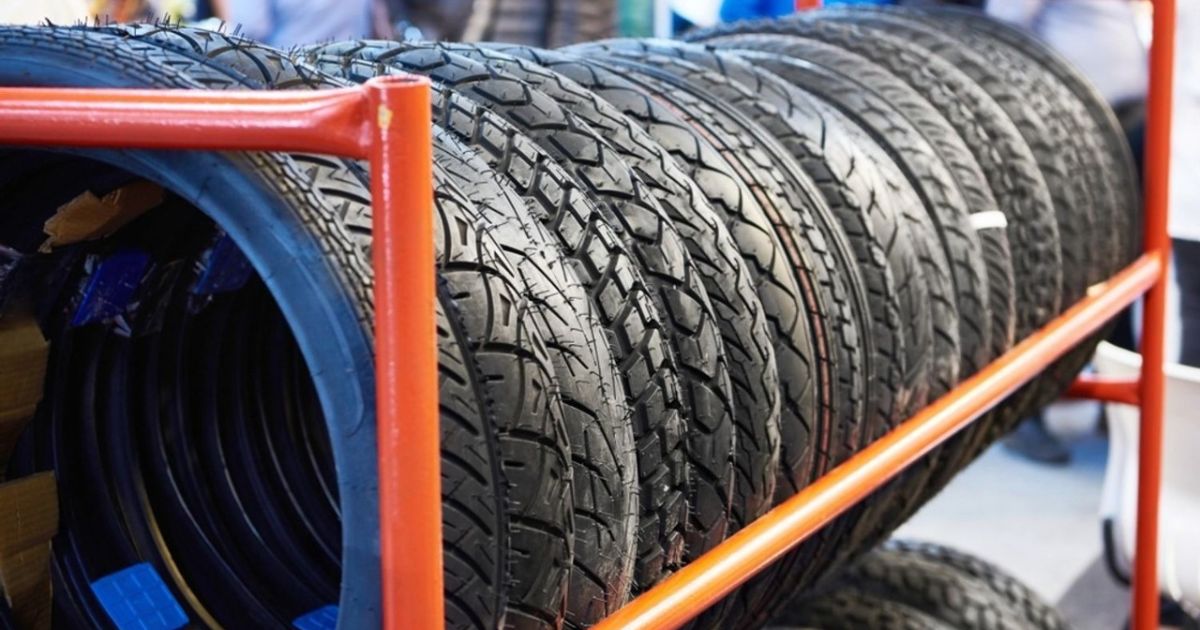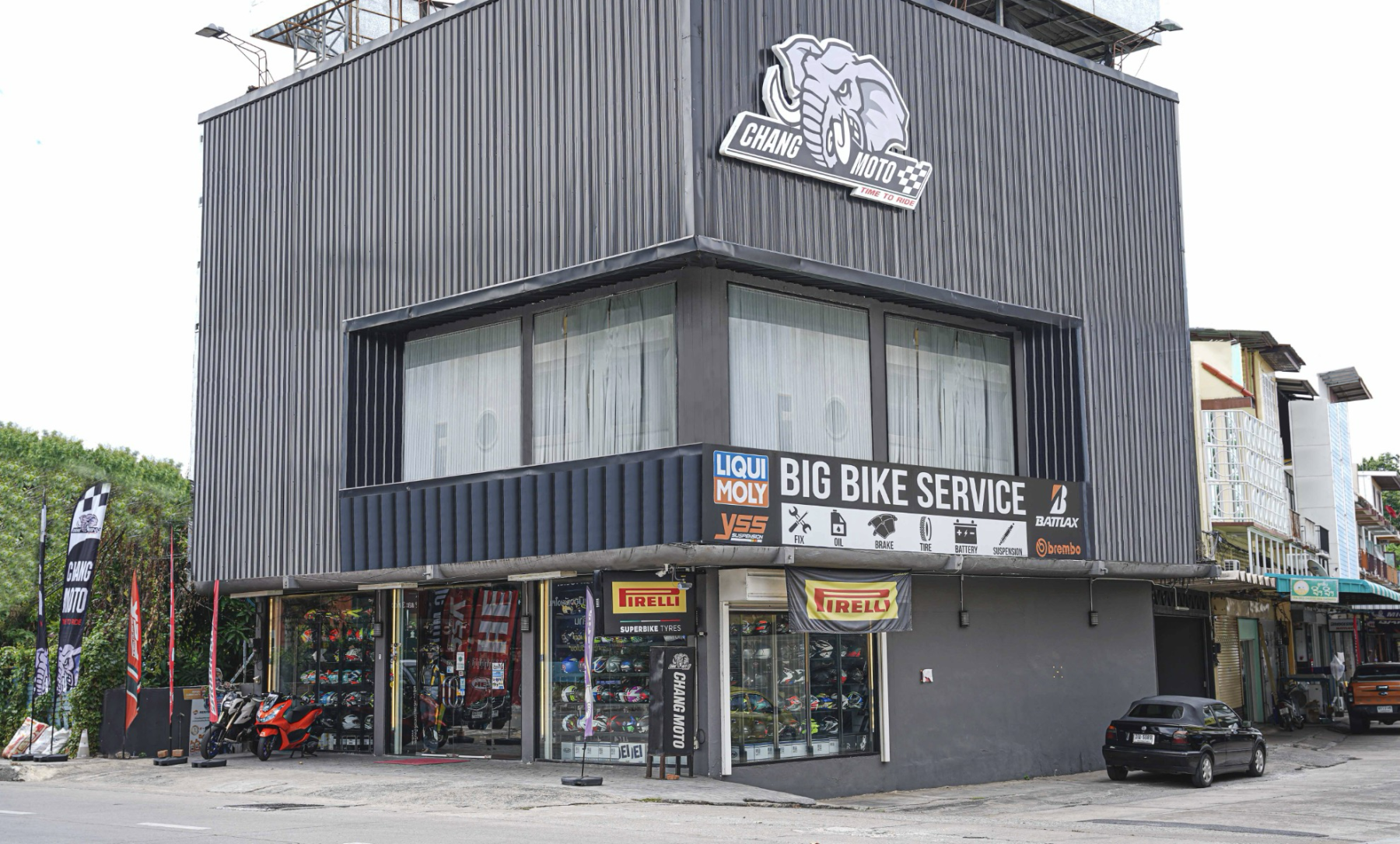
Motorcycle Trailer Rentals: Complete Guide to Hauling [And Saving]
left for contents
I’ll get straight to it, since you know what you’re wondering: what’s the best trailer for my bike, my trip, and my budget?
That’s what this guide is for. Whether you’re hauling a Harley cross-country, moving a dirt bike to the trails, or taking a track bike to race day, this will help you choose the right rental without wasting time or money. Broken down step by step.
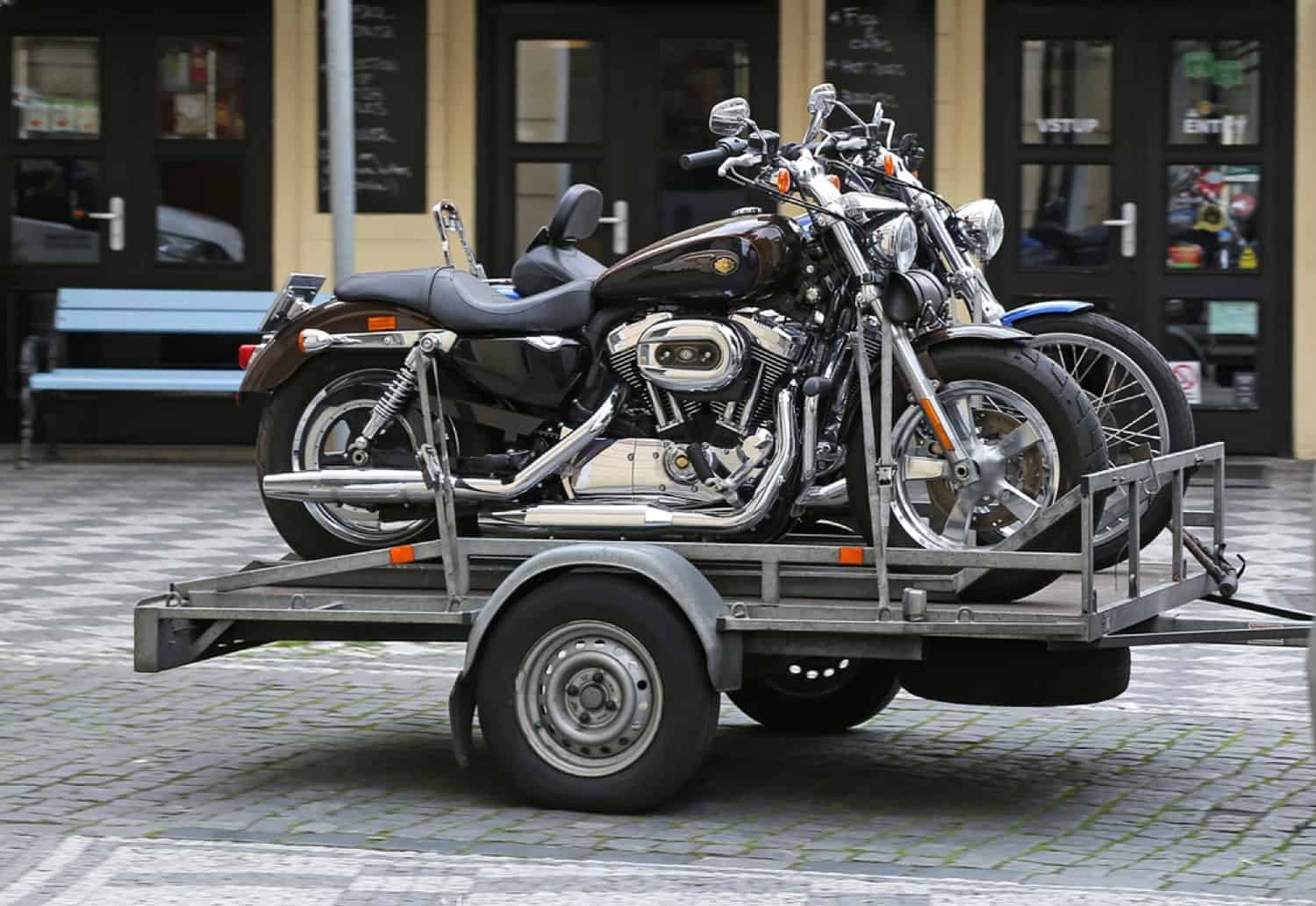
Source
Steps to a Great Haul
Step 1: What are you hauling?
Before you even look at rental listings, nail down:
- Bike type and weight – A 250cc dirt bike (~250 lbs) is a whole different ball game from a 900-lb fully dressed touring bike.
- Bike length and width – Especially handlebar width and luggage racks. Some trailers can’t take extra-wide bikes without modifications.
- Number of bikes – Single, double, or multi-bike? Multi-bike trailers cost more but split costs between riders.
Pro Tip: Know your bike’s curb weight from the manufacturer’s spec sheet. Many riders underestimate, and an overloaded trailer is a recipe for trouble — and sometimes rental refusal.
Step 2: Match Trailer Type to Your Trip
Different trailers exist for different needs. Get this wrong and you’ll either overpay or struggle with loading and safety.
Open Flatbed
- Best for: Short trips, fair weather, budget rentals.
- Pros: Cheap, lightweight, easy to tow.
- Cons: No protection from rain, road grit, or thieves.
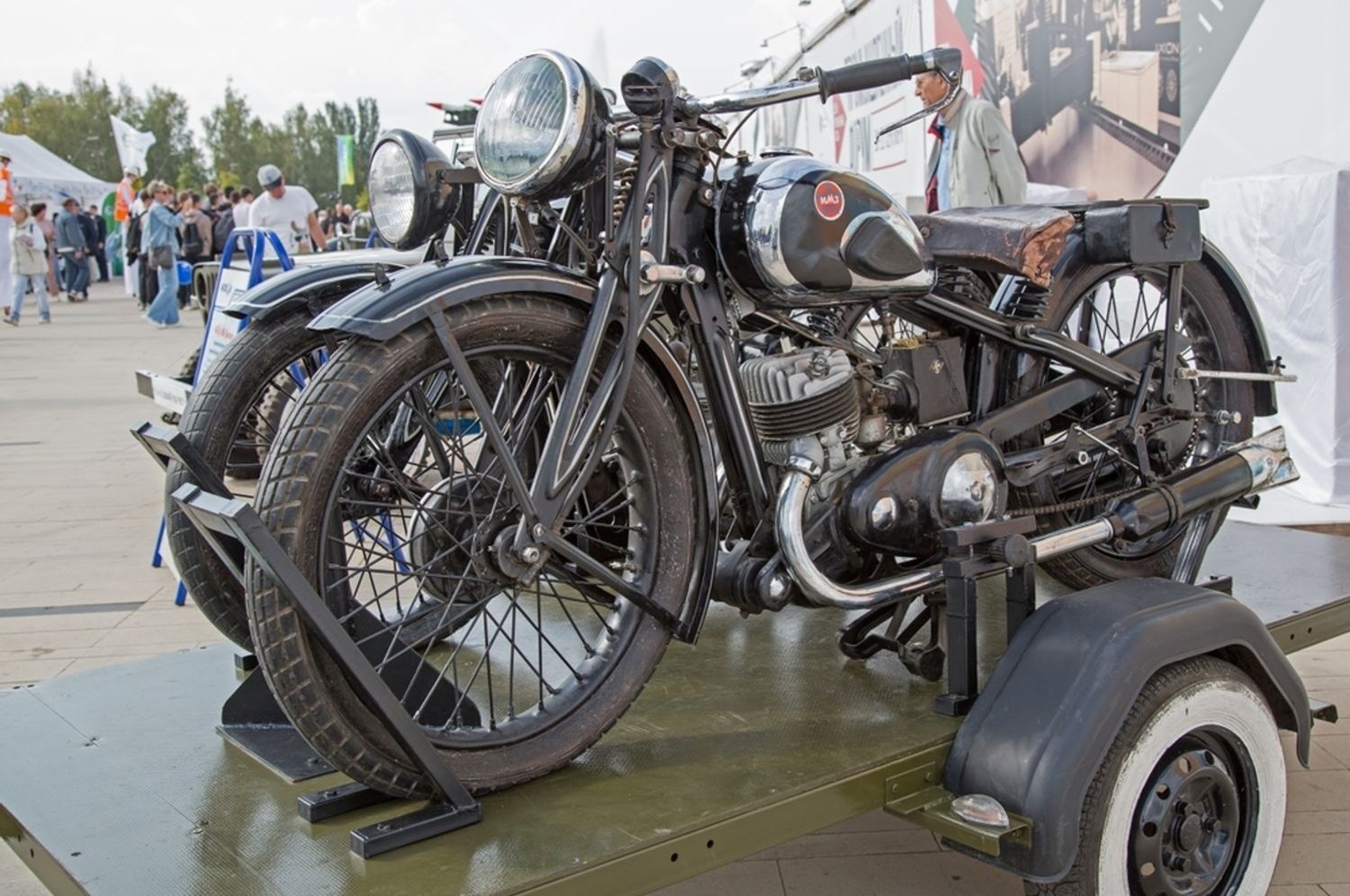
Source
Enclosed
- Best for: Expensive bikes, long trips, bad weather.
- Pros: Full weather and theft protection, extra storage.
- Cons: Heavier, more expensive, needs a stronger tow vehicle.
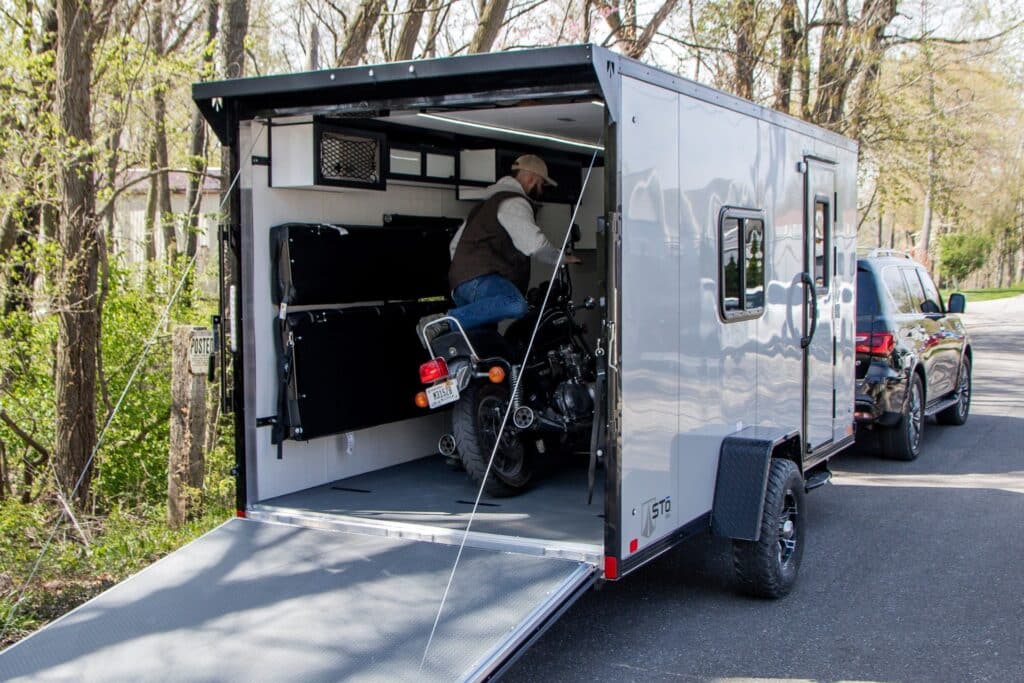
Source
Tilt Deck
- Best for: Heavy bikes when you don’t want to deal with ramps.
- Pros: Low effort loading, safer for big adventure/touring bikes.
- Cons: Less common in rentals, sometimes costs more.
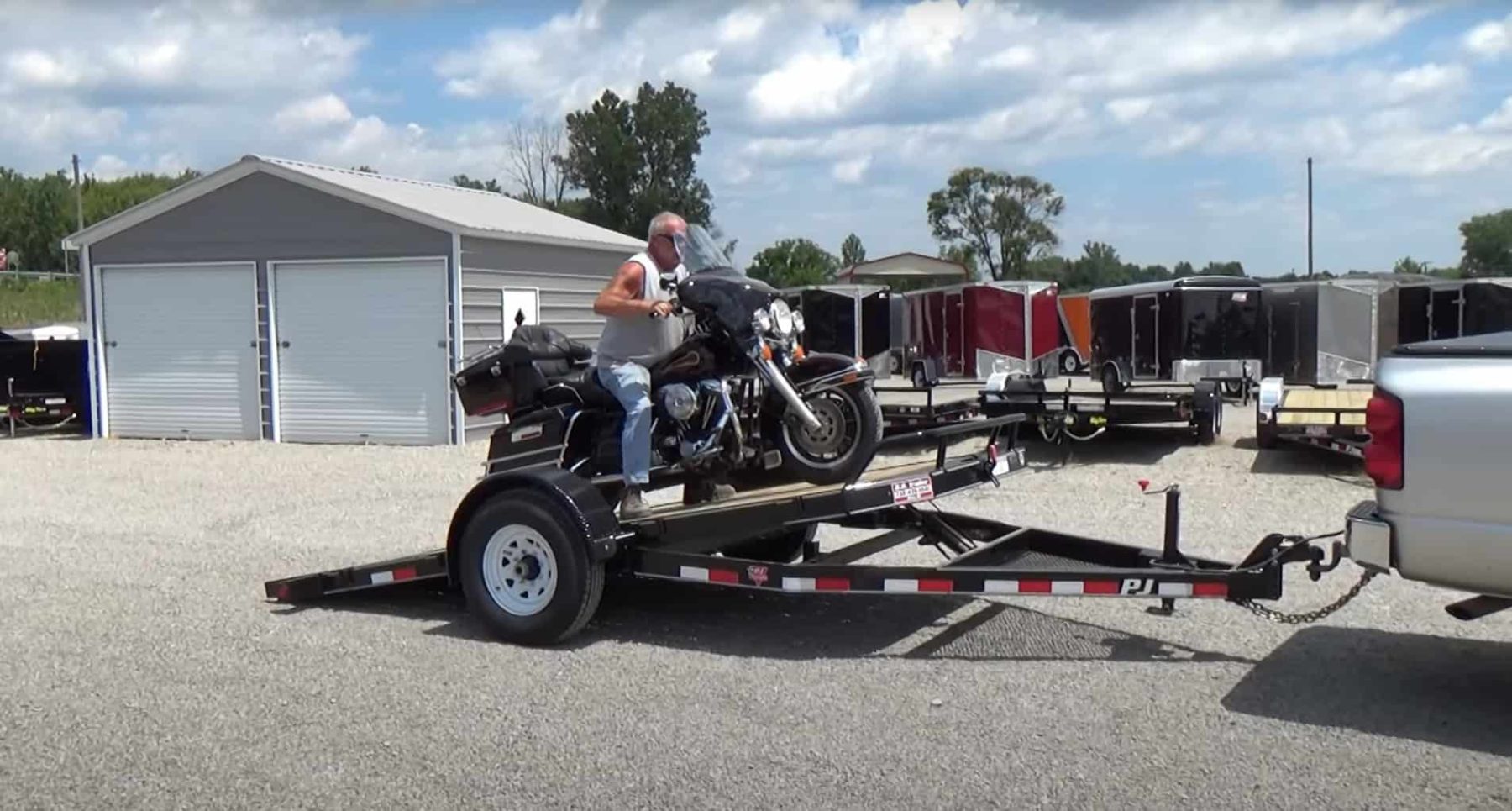
Source
Rail or Channel Trailer
- Best for: Dirt bikes, dual-sports.
- Pros: Lightest option, easy to maneuver by hand.
- Cons: Limited to narrower tires, offers less protection.
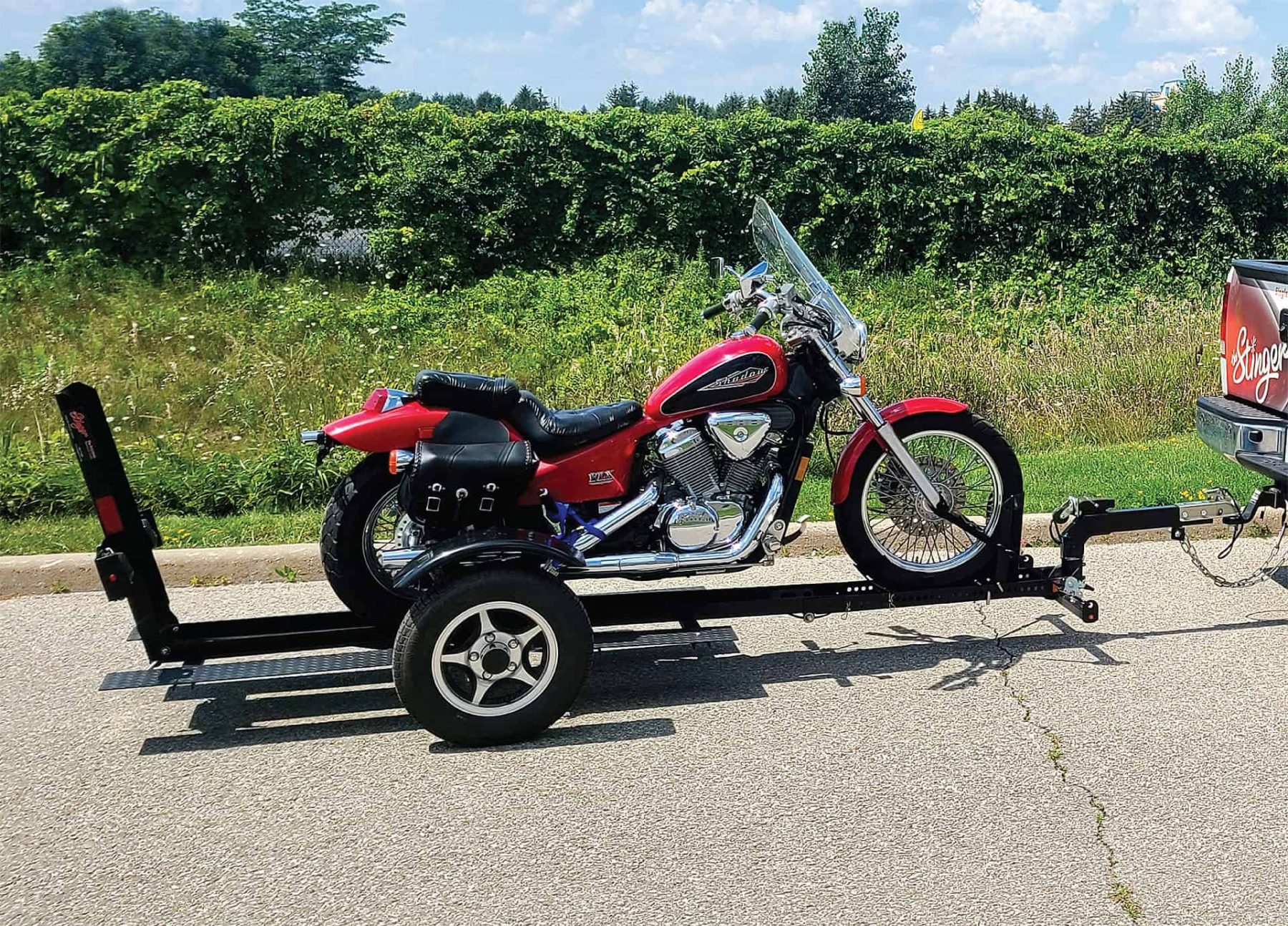
Source
Step 3: Understand Pricing and How to Save
Rental rates vary widely — not just by type, but by timing and location.
Typical Pricing (US examples)
- Open Single: $35–$60/day
- Enclosed Single: $60–$100/day
- Open Double: $50–$80/day
- Enclosed Double: $90–$150/day
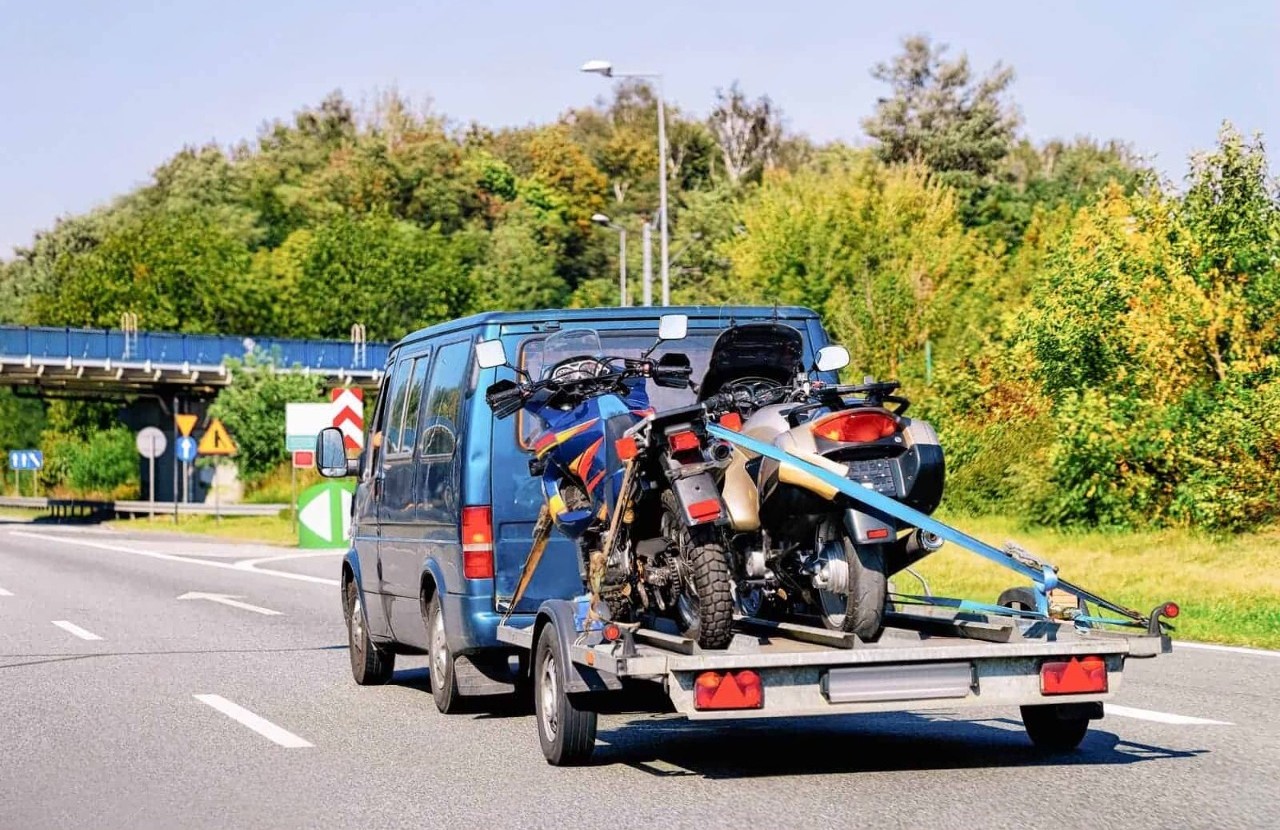
Source
Multi-day discounts are common: 3-day weekend rates can be close to 2 days’ cost.
- Match your bike/trip to trailer type before comparing price. No point paying for enclosed if you just need a quick open flatbed.
- Look at weekend/monthly bundles. Weekend or weekly buys can drastically lower your per-day price. Sometimes 5 days is more expensive than 7.
- Check for hidden fees like insurance, mileage, airport surcharges, or late returns. U-Haul may look cheap until add-ons kick in.
- Scope local options. Smaller operators often have lower base rates, but read the fine print: you might need to bring straps or adapters.
- Lock in your booking early. Especially around events or in tourist-heavy zones (Alps, national parks, major rally towns), rates climb and availability drops fast.
Step 4: Check the Tow Vehicle Requirements
This is where people get tripped up.
- Hitch type & size – Most trailers use a 2″ ball, but some rentals still have 1-7/8″.
- Wiring plug – 4-pin flat is common for open trailers, 7-pin round for enclosed. Adapters are cheap but plan ahead.
- Tow rating – A midsize SUV might handle an open trailer fine, but enclosed trailers can push you over capacity.
Pro Tip: Bring your own hitch lock. Not all rental places supply them, and it’s a cheap theft deterrent.
Step 5: Inspect Before You Sign
Even reputable rental shops miss details. Check:
- Tire condition & pressure – Look for cracking, bulges, or low PSI.
- Lights – Test brake, turn, and running lights.
- Ramps or tilt – Make sure the mechanism works smoothly.
- Tie-down points – At least four strong ones, ideally more.
Take photos before leaving. It protects you from damage claims.
Step 6: Gear You Should Bring Yourself
Rental companies sometimes include straps — often the cheapest, frayed kind possible. Bring:
- 4–6 quality ratchet straps rated for at least 1,500 lbs working load.
- Soft loops to prevent scratching handlebars or frames.
- Wheel chock if the trailer doesn’t have one built in.
- Gloves for loading/unloading.
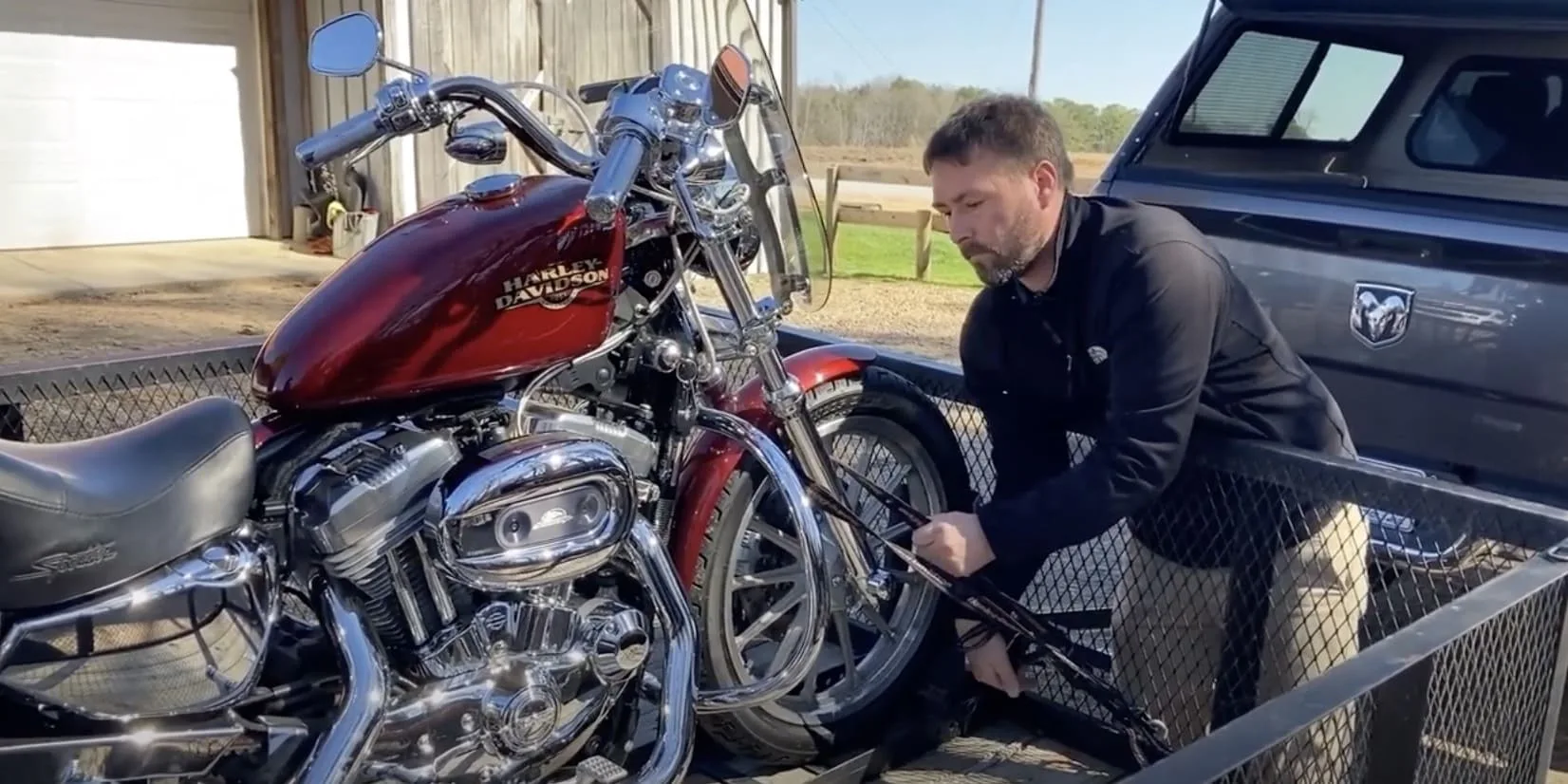
Source
Step 7: Where to Find the Best Motorcycle Trailer Rentals
Nationwide (US)
- U-Haul – Cheap open and enclosed motorcycle trailers, one-way rentals possible.
- RV & Trailer rental marketplaces (e.g., Outdoorsy, RVShare) – Private owners renting their trailers; often better quality gear but requires coordination.
- Powersports dealers – Many rent to customers, sometimes with discounts if you buy parts or gear.
Local & Regional
- Check Facebook Marketplace and Craigslist — lots of small shops rent trailers without much advertising.
- Motorcycle clubs – Members often have trailers and will rent to fellow riders.
Pro Tip: Always compare total cost including insurance, mileage fees (if any), and deposits.
Step 8: Insurance & Liability
Always ask before you sign anything:
- Who’s responsible if the trailer is damaged?
- Is your bike covered inside the trailer? (Usually not — your motorcycle policy or separate transport coverage may be needed.)
- Does your auto insurance cover trailer towing?
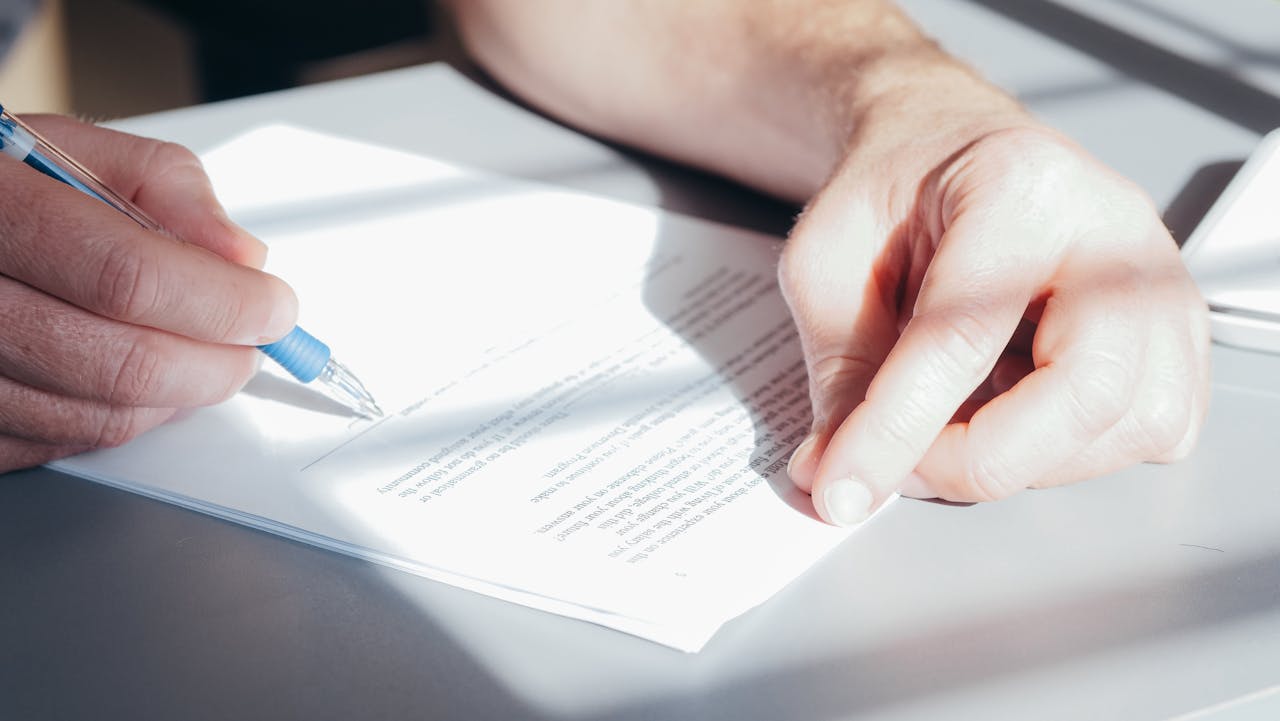
Source
If the answers are fuzzy, call your insurance company before booking.
Step 9: Tricks for Loading and Securing
- Park on flat, solid ground.
- Attach the trailer to the tow vehicle before loading (to prevent tipping).
- Roll the bike up slowly, keeping front brake engaged.
- Use soft loops on handlebars or triple tree, then ratchet straps evenly on both sides.
- Add rear straps to stop side-to-side sway.
- Check straps again after 5–10 miles — they loosen as the bike settles.
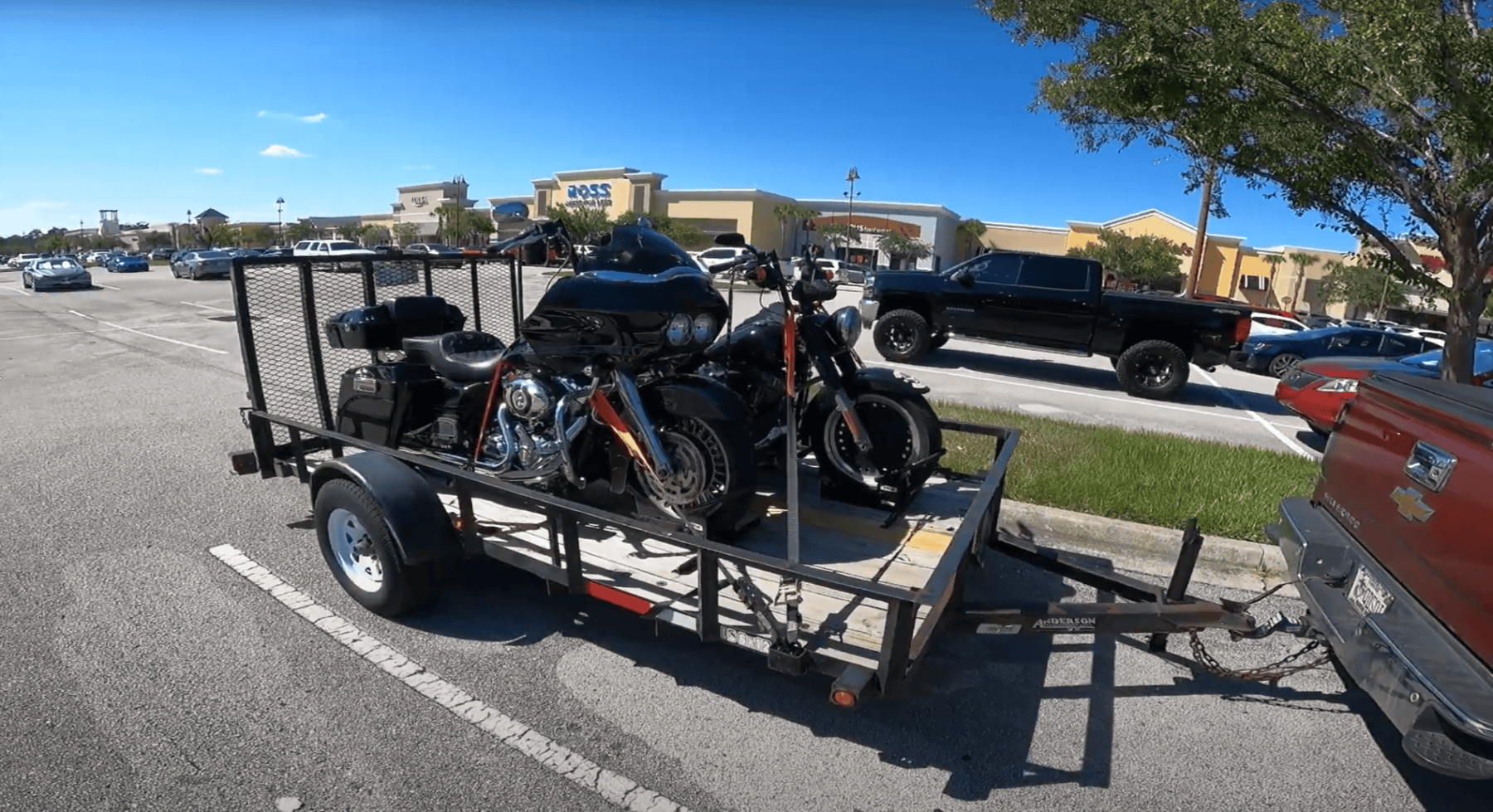
Source
Step 10: Returning Without Extra Fees
- Sweep out debris if enclosed.
- Wipe down any grease marks.
- Fill out any check-in forms completely.
- Return on time — hourly late fees can be nasty.
Common Mistakes First-Time Renters Make
- Underestimating bike weight – Leads to overloading or awkward fit.
- Ignoring tow-vehicle limits – Result: white-knuckle driving and unsafe braking.
- Not checking the weather – Open trailers in storm season = miserable trip.
- Using old or cheap straps – One snapped strap can ruin your bike and your trip.
- Leaving booking to the last minute – Especially bad near rallies, races, and bike weeks.
Trailer Type vs. Trip Type
| Trip Type | Best Trailer | Why |
|---|---|---|
| Cross-country in mixed weather | Enclosed tilt deck | Weatherproof + easy loading for long hauls |
| Weekend dirt bike trip | Open rail | Cheap, light, no overkill |
| Moving multiple street bikes | Enclosed double | Protection + room |
| Short hop to track day | Open flatbed | Easy, cheap, plenty of tie-downs |
| Touring bike relocation | Tilt deck enclosed | Safer load angle for heavy bikes |
The Bottom Line
Renting a motorcycle trailer isn’t complicated once you know exactly what you need – and what to watch for.Here’s the quick decision path:
- Know your bike’s size and weight.
- Match trailer type to trip type.
- Check tow-vehicle compatibility.
- Inspect before you leave.
- Bring your own quality straps.
Do that, and you’ll avoid 90% of the headaches first-timers face — and you’ll get your bike where it needs to go safely, without overspending.
Related

Best Electric Motorcycles of 2025 – A Rider‑Focused Guide
Discover the best electric motorcycles of 2025—street, dirt, and dual-sport rides with real power, long range, and instant torque thrills.

